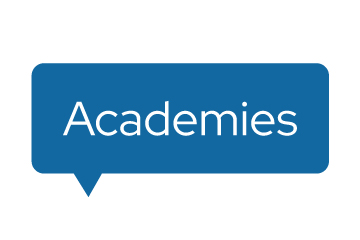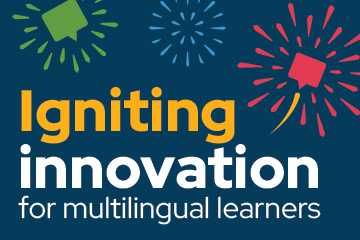This WIDA Snapshot is grounded in WIDA’s ABCs of Family Engagement and can be used to initiate reflection and conversation on local efforts to engage with families of multilingual children.
 Early care and education (ECE) professionals understand the importance of reciprocal partnerships with families of young children. In this snapshot we continue an earlier conversation around engaging equitably with families of multilingual children (see the Multilingual Children and Their Families Snapshot).
Early care and education (ECE) professionals understand the importance of reciprocal partnerships with families of young children. In this snapshot we continue an earlier conversation around engaging equitably with families of multilingual children (see the Multilingual Children and Their Families Snapshot).
ECE professionals recognize and affirm the many ways that families support their children. To champion these efforts, WIDA has identified the ABCs of Family Engagement: awareness, advocacy, brokering, building trust, communication, and connect to learning. While the ABCs don’t provide a step-by-step approach, they can be used by ECE professionals to initiate reflection and conversation on local efforts to engage with families of multilingual children. This Snapshot provides reflection questions you can ask yourself as you think about the ABCs of Family Engagement.
A: Awareness
An essential practice is to raise your own awareness. Start by reflecting on your expectations for family engagement. For instance, are families expected to engage in their children’s care and education in traditional or nontraditional ways? Traditional ways often prioritize the program’s needs (for example, attending parent-teacher conferences). Nontraditional forms ensure that families have a voice in how programs and families work together (for example, gathering ongoing feedback on the types of engagement, locations, and times for engagement families prefer).
- What do families expect from us?
- What do we expect from families?
- How can we partner with families to create and share expectations?
A: Advocacy
Families from historically marginalized populations (such as families of multilingual children) may not have had the opportunity to develop the skills they need to advocate within the U.S. care and education system. You can support families’ advocacy efforts by providing workshops or other opportunities for them to learn these skills. And you can set up decision-making processes that give families a voice in their children’s care and education.
- How do our program and early childhood professionals encourage family advocacy?
- How can we identify the types of support for advocacy families need?
- How can we equip our staff with the knowledge needed to support parent advocacy?
B: Brokering
Brokers are people who help families navigate the program culture and inform them of their rights. WIDA recommends that programs seek brokers who have similar cultural and linguistic backgrounds as families and will follow confidentiality policies.
- How might our program place language barriers on families and how can we address these barriers?
- What resources are available in our program and/or community that can help families learn how to navigate the care and education system?
B: Building Trust
Research shows that trust is central to positive relationships between families and programs. Building this trust is an ongoing, intentional process. In their review of research, Barrueco, Smith, and Stephens (2016) identified features of ECE programs that appear to contribute to high levels of family engagement for families of multilingual children, beginning with creating welcoming, supportive environments. Other essential features include having multilingual and multicultural program staff and having teachers extend personal invitations to families.
- What might make a family feel unwelcome at our program, and how can we address this?
- What resources are we devoting to building trust with families and what resources do we need?
C: Communication
Communication that flows only from program to home does not engage families in ways that respect their experiences, strengths, and needs. Communication must flow both ways, and ECE professionals should consider the language used in oral and written communication.
- How can we ensure that communication is two-way between families and the program?
- How can we ensure communication is family friendly (for example, no jargon, translations make sense to families)?
C: Connect to Learning
ECE professionals need to connect children’s language and cultural practices to their care and education practices. This includes respecting families as experts and using the information families share to inform curriculum, teaching practices, and to create a welcoming, belonging environment.
- How can we gather information about the languages and cultures of the multilingual children in our program in order to support learning and language development?
- How might we invite families to collaborate to choose materials, books, music, and other artifacts that represent and connect with children’s home languages and cultures?





